An open-source intelligence specialist operating under the username Britsky has tracked a major surge in Royal Air Force (RAF) P-8 Poseidon operations over the Norwegian Sea.
According to his analysis, Poseidon MRA1 aircraft flying from RAF Lossiemouth have been maintaining a 24-hour presence north of Norway.
Sustaining this required five of the fleet’s nine airframes in the past 24 hours, as the RAF cannot refuel the type mid-air. The operational limitation means only one or two aircraft can be kept in the patrol box at any given time, with continuous coverage demanding constant rotation.
Flight-tracking data confirms the pattern. The screenshot shows a Poseidon transiting from Scotland at high altitude, indicated by the dark blue and purple track, before descending into its patrol area where the light green racetrack loops appear.
Another RAF P-8 showing the current area of interest better. pic.twitter.com/97C8pzNYR9
— Britsky (@TBrit90) August 25, 2025
These lower-altitude orbits are consistent with active maritime surveillance or anti-submarine warfare tasks, such as deploying sonobuoys or conducting sweeps. The colour-coded trail makes clear the aircraft was not simply transiting but executing an extended mission on station.
The surge in RAF flights coincided with the USS Gerald R. Ford carrier strike group operating in the North Sea, confirmed by the movements of a US Navy C-2 Greyhound resupply aircraft. US Navy Poseidons flying from Iceland were also present in the Norwegian Sea, but the concentration of British aircraft has been especially notable.
Over the past two weeks, tracking shows a shift in RAF Poseidon operations from the western approaches of the UK towards the Norwegian Sea. This repositioning places aircraft directly across submarine transit routes between the Arctic and the North Atlantic, a sector NATO planners have long prioritised.
The tempo strongly suggests a coordinated allied surveillance effort designed to ensure control of vital sea lanes in the High North.
The RAF received its ninth and final P-8 in January 2022, completing the programme that replaced the cancelled Nimrod. Since then, the fleet has been heavily tasked in NATO operations monitoring Russian naval deployments across the North Atlantic, Baltic and Arctic.


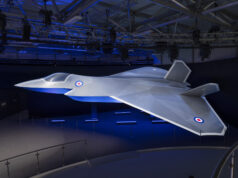

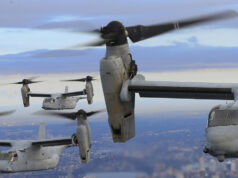


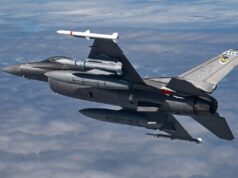

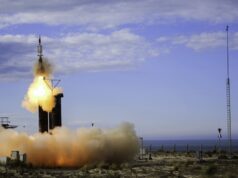
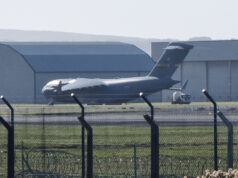


Can we not set up a ten year research program to develop a framework and feasability study for a new system of Drones ? Let’s say £1 billion over the next ten years starting in 2030 subject to approval.
It does highlight how long it is taking to get MQ-9B fully operational. We appear to have bought them underspec for the marine task, without a centerline marine radar, even though the Leonardo (UK) Seaspray radar had already been integrated. Protector was reported as finally getting a military type UK airworthiness certification in May this year, which took 18 months after the first planes arrived in Britain. It was described by GA as part of a Herculean 11 year, half-billion dollar effort. Then as I recall, we decided we’d like it to work in a marine environment, and this was endorsed by the SDR. So no doubt there’ll be another long project to eventually decide to get the British centreline radar rather than the American one or one nobody had previously thought about, with the usual fanfare about jobs created or saved.
The Army Air Corps decided it wanted the same Seaspray radar on its Wildcats and displayed the mockup in DSEI 2021, the latest version of the same radar already operational on the RN Wildcats. Two years of “testing” later it was agreed to have a multi-year radar and TDL installation programme. When Army Air Corps Wildcats were reported exercising in Estonia in May last year as forward air support, a typical mission was descriped as getting a fix using laser targetting and relaying the position back using radio to ask for artillery support, which if granted would also be relayed to the guns by radio. Still no sign of a radar or TDL on the helicopter at that point then. As DSEI 2025 approaches, four years in, I’m curious, has anyone seen an operational Army Wildcat with a real radar yet?
We still have no published target dates as to when the radars will be fitted to RAF Protectors and the support of P-8s can start. I’m sure it will be “at pace”.
Standard.
It’s maddening.
We bought the MQ-9B because it could work alongside civilian European air standards (we even dragged the Belgians in on that one) — in other words, they were never solely for use in the Middle East out of Cyprus. So how did the RAF think they were going to be used in Europe? How nobody thought to endorse the maritime use case from day one, boggles the mind.
I’d love to know how those who tentitively brought that up in meetings got slapped down. “It’s cost justified as a Reaper replacement, so we couldn’t possibly alter the use case. Think of the paperwork!” “We’re already cut from 20 to 16 because of overbudget, do you want us to lose even more? We can always tack the radar on later.” “It’s already got a built in radar that’s almost as good as an IMaster. We can use that.” “One decade at a time, son.”
Yes. I got angry again. Note to self: stop using public forums to vent. Buy a stuffed cat and kick that instead.
I had thought TDL was now up and running on on all wildcat, but latest from questions in Parliament from 19 January 2024, Answered by James Cartlidge: “Defence is currently working with the Platform Design Organisation (Leonardo Helicopters Ltd) to develop a TDL delivery programme for Wildcat, as part of the formal Concept and Assessment Phase. Further delivery dates are subject to approvals, with the Full Business Case expected to be submitted later this year.” So I assume it’s only the RN ones that have it?
Considering that Link16 is offered on export AW159, and apparently the electronics for it are already on our ones too, I don’t understand how hard it can be to just say “make it so, install on ‘x’ airframes at a time so we maintain ‘y’ level of availability over the course of a ‘z’ month programme.
As far as Protector goes, I think those SeaGuardian concepts came in quite some ways through our procurement cycle. MOD is constantly slammed for making changes part-way through procurement that then delays entry and increases cost, I think it could be unfair to then blame them for not doing so in order to keep as close as possible to the budget and programme they were given. That said, it’s a no-brainer to me to fast-track the procurement of a “Maritime Patrol” package for these aircraft.
5 of our only 9 ASW aircraft, good job we are not an Island with bases over seas we might need more than just 9, Any way i am sure some focus group costing millions is talking about it.
Gordon Brown and his PFI fetish again.
On national security grounds scrap it and obtain boom refueling capability. This shows that it will be critical to maintain coverage with only 9 aircraft ( considering the same research shows one hasn’t flown in ages)
Probably also shows a need for more than 8 ASW frigates with TAS, and that SSKs could provide that persistent gatekeeper role in light of the dire SSN availability.
Given we didn’t have the facilities to support and maintain the SSNs, buying SSKs would simply result in more boats tied-up alongside awaiting maintenance. 🤦🏻♂️
The XL AUVs will need to be near SSK sized if they are going to offer that persistent coverage at distance. Cetus range will be classified but how much range and speed will a 12m , 9 tonne craft give. The chariot concept might turn out to be a large craft that will need substantial shore assets.
SSKs give part of the capability for 60% of the cost but in terms of the GIUK gap, having a crew and a commanders decisions on scene with 5 torpedo tubes is a good deterrent. Though with cooperation with Norway and others that mission might be covered with their SSKs
No need for the Type 93s to be the size of SSKs. Being unmanned they can be on station for long periods and a large number procured and operated far more cheaply. They’ll simply be there for detection, once an enemy contact is identified a P8 will fly out to that location, get an accurate fix, drop a torpedo on the contact, job done.
No more boom and bust.
Very very good !
Too subtle for most of us 😁
😜
There’s no problem with the PFI in and of itself- we just didn’t go for a boom on the aircraft. That made sense at the time, given the aircraft we were operating, but not now that we have P-8A, E-7, and now possibly F-35A.
I believe the contract does allow for changing some/all of the airframes to have boom refuelling capability- the A300-MT can have it. We just need to sign off on that option.
There is everything wrong with a PFI contract for essential strategic capabilities! We should not be relying on a private company for these operations. The aircraft should be owned by the RAF and we should then be able to send them off at any point to get booms fitted. If you do the maths it looks like we could have paid very slightly less if we had just bought and operated the voyagers ourselves and we would have had 14 all the time rather than some of them being used for civilian purposes and only available on surge terms. We basically bought 14 aircraft for a private company and then also pay them to maintain and operate them. Of the 14 they use 5 of them for their own money making purposes! So for Air Tanker the contract is excellent! They got bought a bunch of aircraft and are paid to maintain them yet they are also able to make money from them. All for the same amount the RAF could have done it all themselves! Oh and if we owned the aircraft it would be trivial to get booms fitted. As it is we have had to negotiate with Air Tanker which has made it far more complex and probably more expensive.
Agree totally. I dislike it.
But we couldn’t have Gordon Brown having to cough up the cash for defence including up front payments for AAR, could we?
I’m afraid I have to respectfully disagree, although partly due to the UK’s circumstances. But it’s worth bearing in mind that NATO also operate a PFI for refuelling services, and even the US uses private refuelling to fill gaps.
First off, we would never have been able to afford 14 A330MT aircraft on an upfront basis- which is what we’d have had to do if the RAF bought and owned them. While the PFI may be slightly more expensive over the whole term, the lack of having to buy the aircraft and modifications to them up front made such a relatively large fleet possible. The 5 ‘surge’ airframes would have been cut from an RAF procurement immediately, with another few cut over the next few years to meet in-year budget.
The FOC for the fleet was also delivered on time and on budget. I have absolutely no confidence that an MOD-delivered programme would have achieved such a thing. And if you think that a hypothetical RAF-owned fleet of tankers could just be sent off to have ‘trivial’ booms fitted as-and-when without any issues, then I have a Warrior capability upgrade to sell you. Given the respective track records, I have more faith in Air Tanker efficiently fitting booms to the fleet (for which I believe there is a pre-agreed option in the contract) than I have in the RAF.
Well.. upgrading warrior is very different to adding an already normal.upgrade to an already normal aircraft. And obviously the UK could easily have afforded to buy 14 aircraft. The government has near infinite money (and do not let anyone tell you otherwise as that is just how government money works – just like they are lying when they say how much debt the UK is in – it is not real debt it is an accounting anomaly that they can just delete if they wanted to) so 2bn would not be out of the question if they wanted to.
Modifying some existing units was already looked at and ruled out on cost grounds, was advised it’d be better value to procure additional units.
If that happened we could contribute a couple of probe and drogue Voyager’s worth of capacity to the European Air Refuelling Pool in return for access and keep our own boom units for supporting aircraft in the north.
I hadn’t realised that, good to know- thanks. Indeed, no issue with contributing to that effort as well.
Refuelling on NATO missions should be done with USAF compatible refuelers. RAF doesn’t need to own or lease them.
More like the tories defence cuts fetish, cancelling Nimrod MRA4 which could be refuelled. 9 brand new aircraft scrapped in 2011.
They weren’t brand new aircraft.
£800 million overspend, 9 years late, only resulted in 2 refurbished 1960s fuselages to production standard and 3 developmental ones.
Shocking waste of money.
Spot ON
Not brand new? New wing, new engines, new avionics. That’s what I remember when I worked on them .
New wings stuck onto a vintage 1960s fuselage. Because aircraft were handmade back then they encountered major issues when fitting the new wings to the fuselages because of the degree of variation between them.
If you take a Morris Minor and fit new wheels, engine and speedometer you haven’t got a brand new car 🤷🏻♂️
We’ve been over the real reasons for that a number of times on here and NL.
No sense in rehashing it.
On numbers, balance please.
21 Nimrod MRA4 were reduced to 18, 16, 12, then down to 9 as a result of Labour cuts ( of which there were many from 97 to 2009 ) by the time the Tories scrapped it.
This has been gone over many times, it is not a case of one party make cuts but the others do not.
All are bad.
I’m more interested in who in the RAF or HMG decided converting Nimrod, each with different airframes, was a good idea, rather than just buying something OTS.
I think at the time, our shelves were already too full of *Shelved* projects.
Interesting fact that the Bull Dozers used to Bash the shit out of them cost 4 times as much as the aircraft !
I made that up but 🤦♂️
Hey Daniele, Ulya reckons you are a girl !
just sayin 😁
😘
Ork, not female.
Things are different in your world, you can be anything you want so i should not assume
Ork ? It’s a made up name for a made up mythical creature that “Gamers” have adopted. Are you a made up name too ? Are you even Russian ?
So are you saying DM is an Orc now ? I thought you said he was a Female ?
My World is called “Earth”, not sure what yours is called ?
Have you been on the Vodka ?
Tell us all something about yourself so we don’t have to assume. Airborne seems to think you are just trolling and pretending to be Russian. Others have said you are a Troll.
DM has told you most, only change is Iran contract finished about 4 years ago. I worked for some time in artic for investment group, now I consult.
Troll is lazy term to close down conversation, Russian sites are no different in this. I do not comment here often because my questions are answered without me asking or I read stories some days late. Sometimes someone says something so silly I like to tease, it is for my enjoyment only. It is unfortunate that airborne and others offer so many opportunities. Nothing i can tell you will confirm anything about me so believe as you wish. If you have questions ask
I reckon they’re searching for that elusive red tomato. You know, the one the Gerald R Ford couldn’t sink last week – the same one the POW couldn’t sink a while back.
It seems to have been around for ever. “Will no one rid me of this turbulent tomato?” said someone a long time ago.
Always obvious 9 ASW aircraft was never going to be enough to provide coverage of the thousands of miles of ocean around our little island. At least 2 properly sized and funded squadrons needed – 12-15 aircraft per squadron.
The reason why we patrol the GIUK Gap is precisely so that we don’t have to cover thousands of miles of ocean around the U.K.
GIUK might be priority but there is more ocean than that
The threat has to get through the GIUK first.
(The Russian Black Sea fleet might try something, but that’s why we control Gibraltar. There’s also the Russian Pacific Fleet based in Vladivostok, but even if they sail around the planet without sinking they’ll need reprovisioning in a friendly port before they can do anything.)
Is refuelling the issue. Or just running out of buoys?
I think Cramp and Fatigue are the main issues !
Refueling. The aircraft have crew rest to rotate crews. The Australians have flown 20 hour missions.
Several unsupported assumptions here about this activity and why 5 ac were used. If fuelling and endurance was an issue then Shetland, Iceland and Norway would feature as land refuel points. Dont forget we cooperate closely with Norway on these ASW/LRMPA ops. This is a more complex activity than we know and triggering the debate about AAR should hardly be the focus imo. There’s no doubt the UK needs more P8As and thats been identified at all levels since the original planned order for 15 had to be reduced to 9 due to lack of cash at the time. The 9 were bought via the DE&S’s reserve contingency funds to get them in as quick as possible after rightful Parliamentary criticism of the lack of UK capability. Time has moved on – how we fill the gap is the challenge – more P8s and a UAS mix – more than likely.
How are 5 aircraft needed due to lack of refuelling? They dont take that long to refuel.
Exactly
Transit distance. A patrol station 1,000nm from the refueling station takes 5 hours per sortie in transit. The P-8 has an internal fuel endurance of 8 hours, so only 3 hours on station for 8 hours of flight time. You would need 4 aircraft to cover the station 24/7 plus a spare probably.
If refueled on station you could easily cover it with two aircraft and a spare.
Even if we could A2A refuel P8. You would still likely need 5 aircraft to cover a 24hr period. Crew flying hours are strictly controlled for obvious reasons. Time of task isn’t fuel limited. Its crew time limited. A2A refueling would certainly be advantageous, particularly for out of area operations. Bur they crews can’t stay airborne indefinitely.
Yup, Cramp and Fatigue plus rules and regs, no doubt.
Lorry drivers are only allowed certain hours before pulling over and taking a break too.
Unless you are Australian !
RAF could rotate crew as commercials do.
It is a 737 with some seats, toilet, galley so it isn’t like Typhoon or F35…..
Time going to and from station reduced. Landing and take offs reduced.
TBH this looks like RAF bidding for AAR for its P8/E7/RIVET/F35A etc missions.
Huh ? RAF have spare crew ?
What would the Navy think !!!!
I recall Nimrod could cut a couple of engines to save fuel as well, when on station.